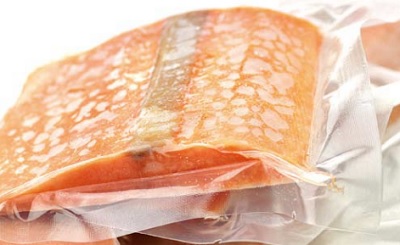With increasing intensity, consumers now more than ever are seeking products that are preservative-free, organic and healthy. This wellness trend is here to stay, and continues to penetrate deeper into major consumer demographics. Health and wellness products already represent 20% of the packaged food market and are growing twice as fast. Within the last few years, the wellness trend has grown to include concerns over the safety of food packaging.
As consumers grow more determined to understand the ingredients in their food, they have begun to realize that packaging plays a significant role in the quality of their food. They know that anything that touches the food product, called food-contact packaging, deserves scrutiny and investigation. What good is a healthy product if it’s packaged in material that can degrade the food or introduce unwanted ingredients? Consumers recall the BPA concerns and understand that it’s not enough to pay attention to the food itself: since packaging is often considered the final element of a product, it can be considered an out-gredient and it is important to understand the underlying materials used in food packaging.
Ingredients that are found in the packaging are just as important as ingredients found within the food itself. These additives are tested to the highest toxicological standards in order to guarantee that consumers are purchasing holistically healthy food products. Consumer brands have not been waiting. The industry is taking no risk and is pro-actively replacing any material that could shed any doubt on the safety of the materials used in food packaging.

WESTON® 705 has received broad food contact approval for use in packaging
Like antioxidants that are found in healthy and natural foods, antioxidants are used in food packaging materials to protect the plastic during its manufacturing and during its life cycle, in the retail environment and in the home. All antioxidants used in packaging have been heavily tested over the years and are inherently safe but the industry is now looking at the next level, ensuring that no impurity or potential degradant from these materials that might be of concern will touch our food, even at infinitesimal levels.
As an example, one of the anti-oxidants used in packaging, TNPP, is a safe material but it is manufactured from nonylphenol as a precursor and could lead to a few parts per million residual presence of nonylphenol in the packaging. Nonylphenol is under scrutiny in several countries for its environmental impact and the industry is pro-actively replacing it with new solutions. Government regulatory agencies like the U.S. Food and Drug Administration (FDA) and the European Food Safety Authority (EFSA) are probing historical additives that are currently being used in food packaging. Likewise, in China, a draft food contact law containing a 10ppb migration limit on nonylphenol is expected to be finalized this year.
Developing new additives for today’s demand
New solutions are emerging that are replacing these older antioxidant technologies. These new solutions are tested with methodologies that did not exist in the past and give the new technologies an edge over their older alternatives in terms of safety and peace of mind for packaging manufacturers.
WESTON® 705 is a new nonylphenol-free Liquid phosphite antioxidant additive developed for use in polyethylene (PET). Today, it is the only anti-oxidant for packaging film that has been tried and tested to the latest most stringent regulatory standards. As of May 9, 2016, WESTON® 705 has also received broad food contact approval for use in packaging from the National Health and Family Planning Commission (NHFPC) in China.
The benefit of new additives that keep up with or even surpass agency regulatory standards is they do not pose the threat of forcing un-forecasted changes in polymer production, processing and conversion due to regulatory changes. WESTON® 705, the polyethylene additive market’s most tested antioxidant additive, processes like TNPP, yet it outperforms other additives in production and increases throughput of the extrusion equipment. With the new law in place, Consumer Packaged Goods companies (CPGs) are seeking immediate replacements for the materials containing nonylphenol. WESTON® 705 has been approved in more than 50 countries for food contact packaging and demand for WESTON® 705 has been steadily rising as it remains the only safe replacement for nonylphenol-free liquid phosphite antioxidant alternative with food contact approvals from large markets in US, Europe and China.
Because it is a liquid and not a powder, resin producers will not only cut down on in-facility pollution, contamination and clean up (in comparison to powders), they will also benefit from more exact dosages and a more efficient production line which allows for uniform resin consistency, better processability and, of course, greater customer satisfaction.
WESTON® 705 converts and processes better than any other phosphite antioxidant on the market, making the switch not only a painless one, but also a more effective solution because it allows processors and converters to run expensive production lines at maximum speeds and permits even older machines to run hotter and at greater throughput providing significant boosts in operational efficiency.
The FDA-approved WESTON®705 differentiates itself as the most rigorously tested, highest performing and most reliable additive on the market. As consumers grow more concerned with safety regarding their food and wellness products, food brand owners using packaging with WESTON® 705-inside™ can guarantee consumers packaging that matches the quality of the brand asset.
With regulations influx, it is important, now more than ever to understand what our food packaging is made of. Whether you are a brand owner, resin producer, converter or processer, packaging additives can dramatically affect your business each and every day. By understanding what ingredients food packaging and packaging materials contain, the supply chain can better address and meet the consumer’s need for safe and reliable packaging while simultaneously overcoming the global regulatory challenges and increasing operational performance inefficiencies in processing and converting food packaging by using WESTON® 705.
Balenciaga













